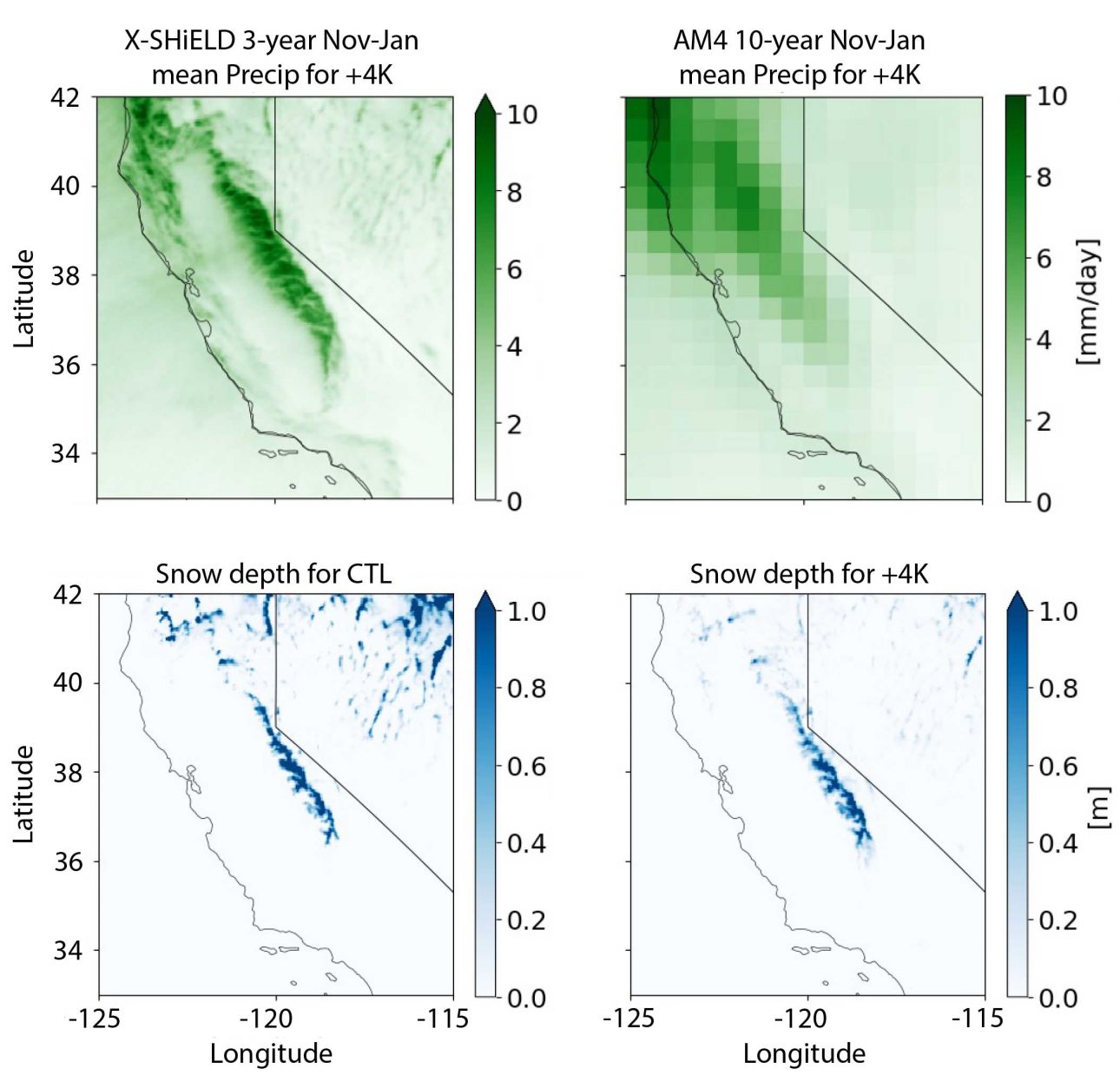July 23rd, 2025
Key Findings
- GFDL has developed a new global 3 km resolution storm-resolving model, the eXperimental System for High-resolution prediction on Earth-to-Local Domains (X-SHiELD).
- X-SHiELD reproduces observed precipitation distributions over the Western U.S.’s complex terrain more accurately than traditional global models.
- Short duration experiments under warming conditions show that snowpack responses vary with elevation; mid-elevation regions experience snow loss under warmer conditions but the highest mountain areas in California retain lower temperatures sufficient for snow accumulation.
Tsung-Lin Hsieh, Lucas Harris, Kai-Yuan Cheng, Alexander Kaltenbaugh, Linjiong Zhou, Liwei Jia, Ming Zhao. Climate Dynamics. DOI: 10.1007/s00382-025-07651-6
Winter high-elevation snowpack is a primary source of freshwater in the Western United States. Focusing on wintertime precipitation in the coastal western U. S., the authors evaluated simulations from a global storm-resolving model, the eXperimental System for High-resolution prediction on Earth-to-Local Domains (X-SHiELD). Developed at GFDL, X-SHiELD operates at global 3 km resolution, allowing for the simulation of both broad atmospheric patterns and localized precipitation features. The model reproduces observed precipitation distributions over complex terrain more accurately than traditional global models.
Traditional global climate models, with horizontal grid spacings of 50 to 200 km, have limited ability to represent fine-scale mountain topography and associated precipitation processes. Regional models offer higher spatial resolution but cannot simulate interactions between localized mountain circulations and global scale weather systems. Global storm-resolving models like X-SHiELD can represent both.
This study also included short duration experiments under warming conditions using X-SHiELD. These simulations show that snowpack responses vary with elevation. While mid-elevation regions experience snow loss under warmer conditions, the highest mountain areas in California retain lower temperatures sufficient for snow accumulation. The short simulation period limits the certainty in this conclusion, but results highlight elevation-dependent differences in winter precipitation phase. In contrast, snowpack in the coarser-resolution model is largely eliminated in the warmed climate. Whether snowpack persists influences the regional surface energy budget due to the snow-albedo feedback.
The results highlight the value of consistently representing both local orographic circulations and the large-scale circulation responses to warming, which is provided by a global storm-resolving model, but not by either conventional climate models or regional downscaling approaches.
The use of X-SHiELD, based on GFDL’s FV3 Dynamical Core, enables direct analysis of precipitation processes across scales within a single modeling framework. While this analysis focuses on the Western U.S., the same approach can be applied to other high-relief regions using the publicly-available X-SHiELD output. This work was supported by the Western U.S. Hydroclimate project and the NOAA Research Global-Nest Initiative.



